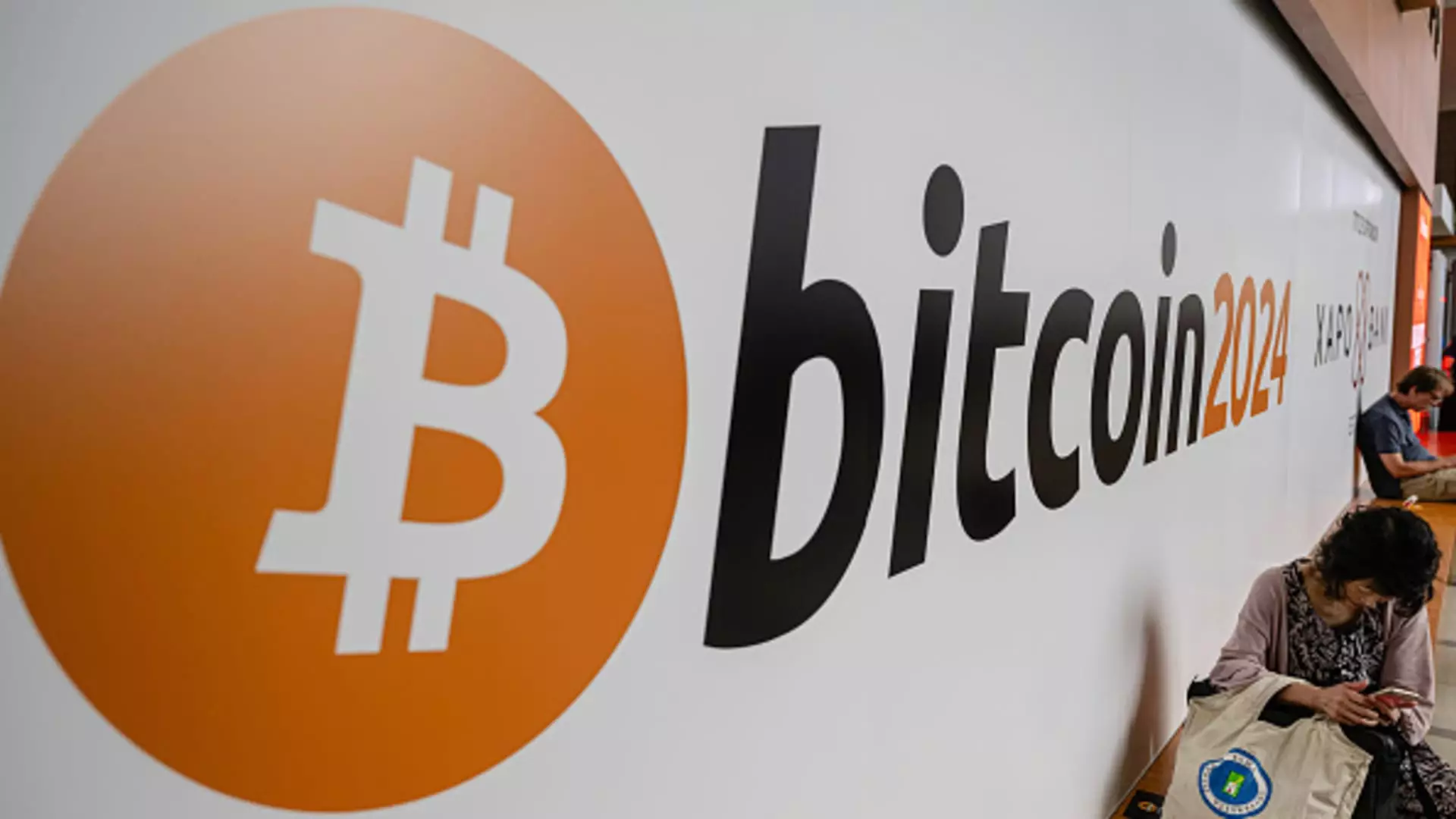The past week has presented a mixed bag for those invested in Bitcoin, showcasing both glimmers of hope and significant challenges. Over the course of just seven days, Bitcoin has made headlines for a remarkable 12% increase in value. This rise signifies not only a potential resurgence in public interest but also reflects the cryptocurrency’s growing acceptance as a legitimate asset class. However, the triumph is somewhat overshadowed by another stark reality: Bitcoin mining, a critical component of this ecosystem, is becoming increasingly difficult to profit from.
One of the week’s standout metrics was the network’s hash rate, which soared to an unprecedented peak. The hash rate refers to the total computational power that miners contribute to the Bitcoin network. A high hash rate typically indicates a robust security framework within the system, as more miners engage in the process of verifying transactions. With more miners comes enhanced competition, which, while beneficial for network security, concurrently reduces the profitability margins for individual miners. The direct correlation between increased hash rates and diminished individual earnings highlights the intricate dynamics of the Bitcoin mining landscape.
Reports from investment banks have already indicated a worrisome trend: profitability for Bitcoin mining has taken a severe hit. Specifically, Jefferies, a reputable investment bank, noted an 11.8% decline in average daily revenue per exahash from the previous month. This decline raises important questions about the sustainability of mining operations as we enter a new era where Bitcoin is no longer the untamed asset it once was. Instead, it is gradually being integrated into mainstream finance, which could spell the end of the “easy money” era.
The Impact of Institutional Investment and Market Changes
Since the approval of spot Bitcoin exchange-traded funds (ETFs) in January, institutional investment has surged, contributing to the Bitcoin market’s expansion. While a more robust network is typically a positive sign, it complicates the earning landscape for miners. As the number of active miners grows, the competition intensifies, leading to smaller rewards distributed across a broader pool of participants. This phenomenon is compounded by Bitcoin’s halving events, which occur roughly every four years and serve to diminish the issuance of new Bitcoin. The latest halving resulted in a 50% reduction in new coin generation, further straining mining operations.
Such changes have already contributed to a wave of financial challenges for numerous mining companies. Wall Street’s scrutiny has proven unkind, with firms like Marathon Digital and Riot Platforms suffering considerable declines in stock value—down 30% and 53%, respectively, in 2024. This situation underscores the reality that while Bitcoin prices may rise, the effects on miners can be starkly different. Notably, Jefferies pointed out that North American mining firms’ contributions to new Bitcoin have dwindled, falling to 19.9% of the total network production.
Despite the dire outlook, not all miners are facing adversity. Companies like Core Scientific are leveraging their infrastructure to pivot towards more lucrative applications, such as artificial intelligence (AI) and high-performance computing (HPC). Their recent partnership with CoreWeave, a significant Nvidia-backed startup, underscores a strategic shift that could redefine traditional mining paradigms. Core Scientific’s emphasis on versatility—offering services beyond Bitcoin mining—demonstrates an adaptability in a sector rife with challenges.
CEO Adam Sullivan emphasized the necessity of diversification, pointing to the opportunities poised for success in the next few years. If Core Scientific optimizes its substantial capacity, it could become one of the largest data center operators in the U.S. Their approach signals a determined move towards embracing growth sectors that could potentially yield better returns than Bitcoin mining alone.
As the cryptocurrency landscape evolves, it is essential for stakeholders within the Bitcoin mining arena to reassess their strategies in light of new economic realities. While Bitcoin has proven itself as a desirable digital asset, the subsequent stress on miners’ profits introduces uncertainty that must be navigated carefully.
The contrast between rising Bitcoin prices and declining miner profitability paints a complex picture of the cryptocurrency’s future. As some miners adapt by embracing new technologies and markets, others may find themselves facing insurmountable challenges. The intersection of tradition and innovation within the Bitcoin mining ecosystem will continue to shape this unfolding narrative. Adapting to these shifts could very well be the key to unlocking opportunities and weathering the storm in a world of ever-increasing competition.

